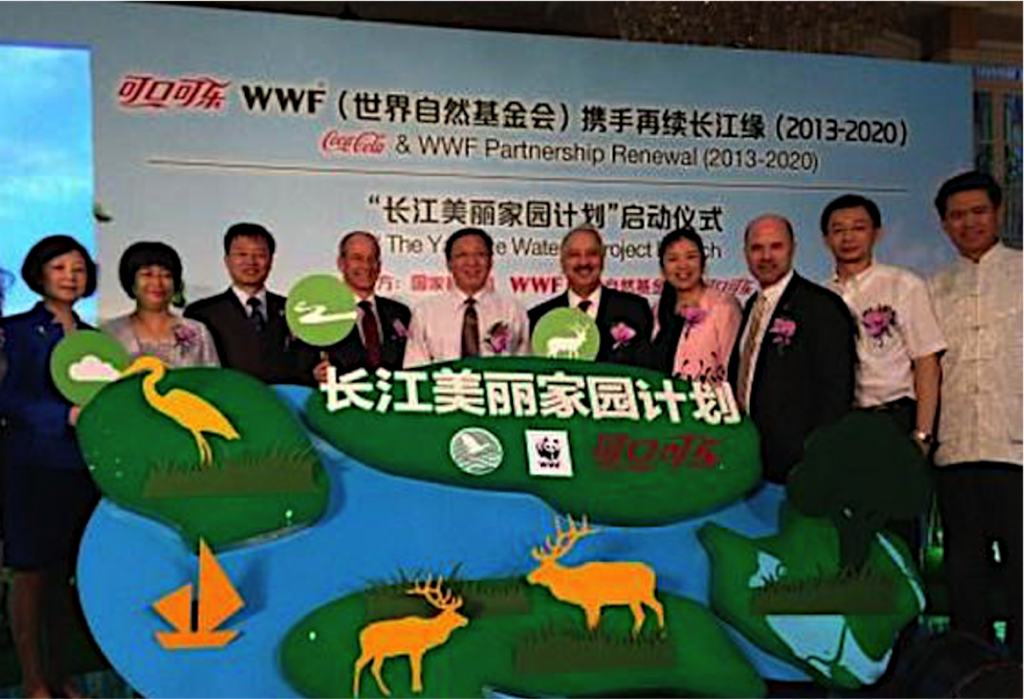Government’s Efforts
In response to the devastating consequence of endangering species in the Yangtze River, the Chinese government has put significant efforts into species conservation and biodiversity protection in the Yangtze region. A series of policies has been enacted to promote the public awareness and to strengthen the existing legislation and implementation.
- Natural Reserves have been established, and human activities such as construction, fishing, pollution releasing are strictly regulated in these region (Wang et al., 2011).
- To restore the fish stock of Yangtze River and to protect the degrading Yangtze ecosystem, annual fishing ban on the Yangtze River basin has been activated by the Chinese Ministry of Agriculture since 2012 and has been extended from three months to four month since 2016 (New China TV, 2016).
- Commercial fishing of Chinese sturgeon is prohibited, and fishing for scientific purposes was restricted only to certain areas and during special season of the year.
We extend fishing ban from three months to four month to ensure that most of the aquatic lives in the Yangtze have enough time to spawn and rehabilitate. In addition we add more key tributaries and lakes to the fishing ban list in a bid to better protect the fishery resources and the environment along the Yangtze.
It is not optimistic according to the data we have collected, which shows that the fishery resources are in a steep decline. As for large species like the Chinese sturgeon, we have not detected their acts in Yangtze in years.
-Han Xu (China Fisheries Law Enforcement)
Artificial Reproduction
Moreover, a large number of juvenile Chinese sturgeons from controlled reproduction have been released into Yangtze River by different corporation for the enhancement of this valuable species (Wang et al., 2011). Universities and state institutes have also launched scientific researches on Chinese sturgeon to investigate the population change, migration trends, spawning activities, and their vulnerability to human activities in their habitats (Wang et al., 2011).

Non-governmental organizations
Non-governmental organizations have also become active players in sturgeon conservation and biodiversity protection in the Yangtze River.
Green River
Green River, an NGO from Sichuan Province, focuses on monitoring and protection of the Yangtze River (Cooper, 2006). The major goals of this organization is to facilitate sustainable development for the river source area, formulate recommendations for environmental policy making, and raise public attention on Yangtze-related environmental issues. Since their registration in 1997, they have promoted dialogue with local residents in the Yangtze source areas, distributing promotional material to the public and submitting report and recommendations to local governments. By collaborating with government officials and private businesses, Green River has played a significant role in protecting the precious species surrounding Yangtze River. (Cooper, 2006).
World Wildlife Fund

World Wildlife Fund has cooperated with the governments and other commercial partners, such as the Coco-Cola Company, to restore the sturgeon populations and their habitats in the Yangtze River (“Species are disappearing,” n.d.). Protecting the 39 nature reserves in this region, the wetland protection program launched by WWF has benefited not only the sturgeon and dolphin species, but also over 100 species of water birds (“Species are disappearing,” n.d.).
Sources:
Cooper, C. M. (2006). ‘This is Our Way In’: The Civil Society of Environmental NGOs in South‐West China1. Government and opposition, 41(1), 109-136. doi: 10.1111/j.1477-7053.2006.00173.x
New China TV. (2016). China extends fishing ban on Yangtze River. [Video] Retrieved from https://www.youtube.com/watch?v=1OJEzZD0G70
New 21CN. (2013). Coca-Cola and WWF launched the “Yangtze Water Project”. [Photograph]. Retrieved from http://news.21cn.com/caiji/roll1/a/2013/0710/14/22676922.shtml
Tengxun News. (2015). 3000 Chinese sturgeons are released at the Three Gorge of Yangtze River. [Photograph] Retrieved from http://news.qq.com/a/20150412/021046.htm#p=1
Wang, J. H., Wei, Q. W., & Zou, Y. C. (2011). Conservation strategies for the Chinese Sturgeon, Acipenser sinensis: An overview on 30 years of practices and future needs. Journal of Applied Ichthyology, 27(2), 176-180. doi:10.1111/j.1439-0426.2011.01716.x
WWF (2016). Species are disappearing. Retrieved from http://en.wwfchina.org/en/what_we_do/species/
